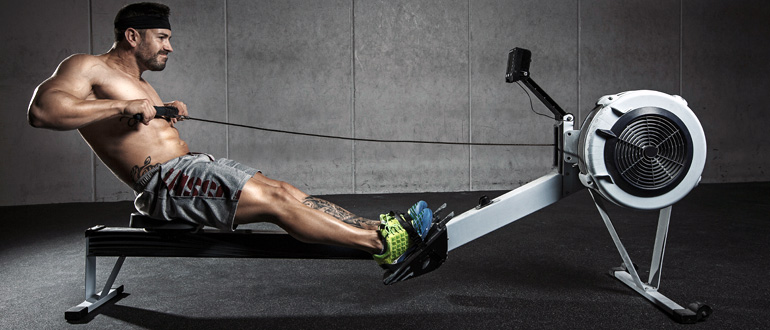
A Full-Body, Low-Impact Workout
Rowing machines, also known as ergometers or rowers, are popular pieces of fitness equipment that simulate the action of rowing a boat on water. They provide an excellent cardiovascular workout while engaging multiple muscle groups at once – making them one of the most effective all-round machines available, whether in the gym or at home.
Unlike some forms of cardio that put pressure on your joints, rowing is a low-impact activity. This means it’s gentler on your knees and hips, making it suitable for people of all fitness levels, including those recovering from certain injuries.
What Makes Rowing Machines So Effective?
One of the key benefits of a rowing machine is that it offers a full-body workout. With each stroke, you engage muscles in your legs, core, back, shoulders and arms. Not only does this help build strength and endurance, but it also means you’re burning more calories compared to machines that focus on just one part of the body.
Rowers are also highly versatile – you can use them for:
- Steady-state cardio (a longer, lower-intensity session to build endurance)
- High-intensity interval training (HIIT) to boost heart health and fitness quickly
- Warm-ups or cool-downs as part of a broader fitness routine
Using a Rowing Machine: Getting Started
To use a rowing machine, you sit on a padded seat that glides smoothly along a rail. Your feet are strapped into footrests, and you grip a handle attached to a chain or cord. As you row, the seat moves back and forth beneath you.
Each rowing stroke involves a sequence of movements:
- Catch – You begin at the front of the rail with your knees bent, body leaning slightly forward, and arms extended.
- Drive – You push powerfully through your legs, then lean back slightly and pull the handle towards your torso.
- Finish – Your legs are extended, torso is leaning back a little, and the handle is drawn in close to your stomach.
- Recovery – You reverse the motion: arms extend, body leans forward, and your knees bend as you return to the starting position.
It’s a smooth, flowing motion that becomes easier with practice. The key is to maintain good posture throughout – keeping your back straight, core engaged, and avoiding jerky movements.
Resistance and Workout Intensity
Most rowing machines allow you to adjust the resistance level, often using a dial from 1 to 10. This lets you tailor the intensity of your workout to suit your goals and fitness level. A lower setting mimics rowing on calm water and is ideal for beginners or warm-ups, while higher resistance levels simulate tougher conditions and offer a more challenging workout.
Considering a Rowing Machine for Home Use?
A rowing machine can be a great investment for home fitness, offering a space-efficient alternative to treadmills or cross trainers – especially if you’re looking for a machine that delivers full-body results.
However, there are a few practical considerations:
- Size – Rowing machines can be quite long, so make sure you have enough floor space.
- Noise – Some models (especially air resistance rowers) can be noisy, which might not suit shared living spaces.
- Surface – On hard floors, rowers may slide slightly during use. A mat underneath can help reduce movement and protect your flooring.
- Storage – Some machines fold for easy storage, which is worth looking for if space is limited.
Prices vary significantly. A decent entry-level rower might cost around £100–£200, while high-end models used in commercial gyms can be upwards of £800.
Rowing Machines and Injury Recovery
Rowing can be particularly useful in physiotherapy or rehabilitation settings due to its low-impact nature. It allows users to gradually rebuild cardiovascular fitness and muscular strength without placing too much strain on the joints. This can be beneficial for people recovering from knee or hip injuries.
That said, rowing does involve repetitive movements that put some strain on the lower back, especially if technique is poor. Lower back discomfort is one of the most common rowing-related complaints, so it’s vital to prioritise form over speed.
If you’re recovering from an injury or have any underlying health conditions, it’s always best to speak with a doctor or physiotherapist before starting a new exercise routine.
In Summary
Rowing machines offer one of the best full-body workouts available in a single piece of equipment. They improve cardiovascular fitness, strengthen major muscle groups, and allow you to tailor your workout intensity with ease. Ideal for both beginners and seasoned athletes, rowers are also a smart choice for home gyms – provided you have the space.
Remember: good technique is everything. Take your time to learn the r




